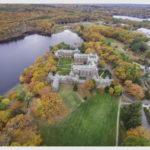Things to Consider When Choosing a Local Environment for College
This article was written based on the information and opinions presented by Hale Jaeger in a CollegeVine livestream. You can watch the full livestream for more info.
What’s Covered
After you determine the region within or outside of the country where you would like to study, the next step is to research the local environment of the schools you are exploring. There are a few different types of local environments, and they can impact the dynamics of the schools that you are considering. In this article, we provide insight into two common types of local environments: rural schools and suburban schools, also known as college towns.
Rural Schools
Access to Amenities
The first type of local environment encompasses colleges that are situated in rural contexts. These are typically schools that are farther away from large towns and main thoroughfares or roads. They can be harder to access and usually require a car. They are also usually not close to a few of the amenities that you might be familiar with in a large town or city. These areas will still have some services, however, and will not be completely isolated.
At a typical rural school, you will have a main street with the things that you need, such as a laundromat and a few restaurants. Beyond this, most other amenities will be available to you through the school or on campus.
Typically Liberal Arts Schools
Usually, rural schools are small and don’t have a large enough community to fully support a large town. Due to their size, many rural colleges are liberal arts colleges. Examples of rural liberal arts colleges include Colby College in Maine, Washington and Lee University in Virginia, and Grinnell College in Iowa.
Since these are liberal arts institutions, they are less likely to have many graduate and professional schools; at most, they might have one or two. For example, Washington and Lee has a law school, but that’s the only graduate or professional school it has. Additionally, it doesn’t offer opportunities to obtain a PhD and doesn’t have a medical school associated with the university.
Schools like this are usually quite focused on the undergraduate experience rather than the graduate experience, which means undergraduate students get a great deal of support and attention from faculty and staff. That said, you usually don’t have the opportunity to be paired with a graduate student mentor or have as many teaching assistants who are graduate, medical, or law students.
Strength of Community at Rural Schools
Since rural schools typically have amenities available within, students spend most of their time on campus, which creates a tight-knit community. There is also often a close town-gown relationship, or a relationship between the town in which the school is located and the school administration and student body. For some students, this aligns perfectly with what they are looking for in a college experience.
In an environment like this, students are more likely to have opportunities to interact with their whole class, and classes are usually small. While rural schools may not have the same number of opportunities available to the student body in terms of research, internships, or resources, students will definitely face less competition from their peers because more individualized attention is given to each undergraduate.
Local Opportunities and Resources
Schools located in rural areas are more likely to offer opportunities and resources that are related to the surrounding environment. For example, Colby College emphasizes agricultural sciences, conservation, and wildlife management, and these departments are tied to its local wildlife refuge. If these fields of study are appealing to you, a rural school could be a great option because you will have more access to nature preserves and similar resources than you would in a big city.
Suburban Schools and College Towns
Access to Amenities
The next type of local environment is that of suburban schools and college towns. This school type is a popular setting for a college.
In this environment, the college is probably the biggest show in town, bringing in the most people in terms of employment and tourism. In contrast to a rural school, it has many more amenities and businesses that are independent of the school. In a suburban setting or college town, students usually have access to many restaurants, off-campus apartment buildings and housing options, laundromats, and experiences like bars and escape rooms. Since the college is such a big part of the town, many of the local businesses are tailored to what college students are looking for, want, and need.
Types of Suburban Colleges
College towns can vary widely in terms of the opportunities and resources available because a college town can be a great setting for a small school, a massive state school, or a large private institution. For example, the University of Vermont in Burlington, Vermont, is the quintessential college town. There, students have access to resources like cute little shops and a nearby ski area.
There are also college towns like Williamsburg, Virginia, which is the home to William & Mary; Syracuse University in Syracuse, New York; Stanford University in Palo Alto, California; and the University of Notre Dame in South Bend, Indiana. These towns have different resources and opportunities that vary with the type of institution located within them.
College Towns and the Surrounding Community
While the college town environment will differ depending on the type and size of the school, there is a common experience in how the school and the town interact. In college towns, there is typically a strong town-gown relationship, and the culture of the town is often intertwined with the culture of the local college.


